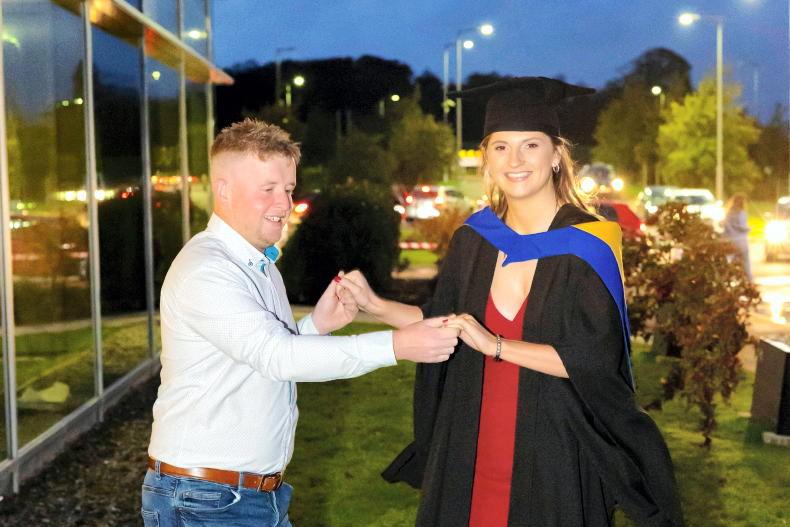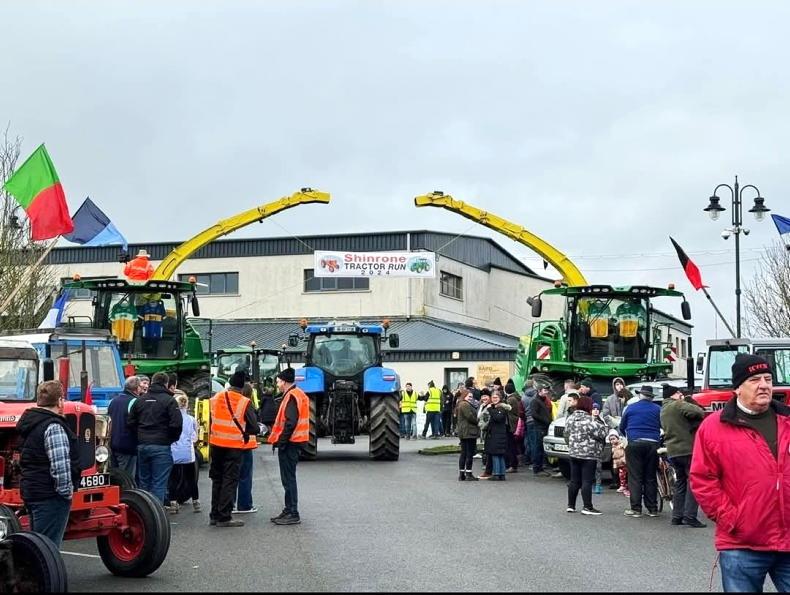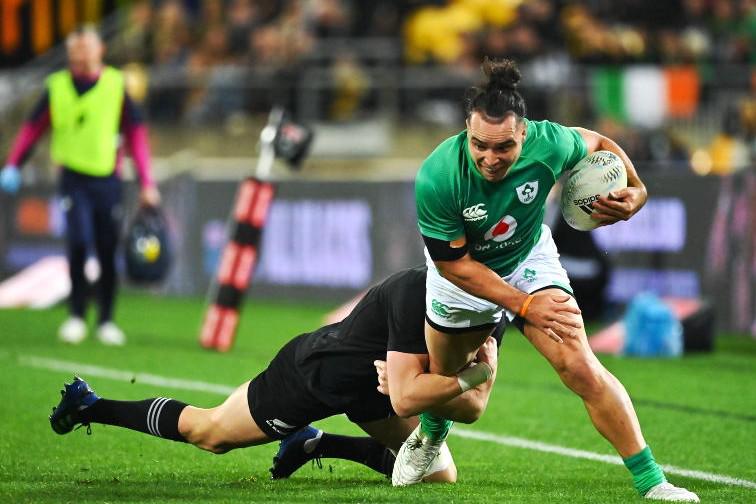Next Sunday week sees the Philadephia Eagles meet the Kansas City Chiefs in Super Bowl LVII.
Rihanna is performing the halftime show, which is something that will draw viewers who have no interest in American football, but even without that interlude, it is still one of the biggest global sporting events, and the viewing figures provide the pinnacle of the NFL season.
Or, rather, we should say “the pinnacle of that NFL season,” because, as one national league ends, others begin on this side of the Atlantic Ocean, with counties in men’s and ladies’ football, hurling and camogie gearing up for what they hope will be long campaigns.
However, while the American NFL draws more interest the longer it goes on, the Irish equivalents are something of an oddity in that the spike comes at the start, and the denouements tend to be seen almost as distractions.
Saturday night in MacHale Park in Castlebar drew 14,000 people to see Mayo earn a last-gasp draw with Galway in Division 1 of the Allianz Football League.
Kevin McStay finally being in the Mayo hotseat after a couple of near misses would have resulted in a degree of natural curiosity, while the local-derby element – and potential dress-rehearsal for a Connacht semi-final – also added to that.
Sub-plot
There was another sub-plot in that Galway are the Connacht county to have most recently played in an All-Ireland final, after Mayo had been the standard-bearers for so long.
All of those things added together to contribute to the large crowd, but we would wager that a meeting of the counties in say, round five of seven, wouldn’t be the same draw – even if those provincial rivals were vying for supremacy at the top of the table.
By the time March comes around, the ‘Isn’t it great to have inter-county action back?’ feeling has given way to pre-championship concerns and the league takes on a preparatory function, almost to the point that playing in a final is a distraction so close to the commencement of the real stuff.
That’s the way it always has been, but that sense will become even more pronounced in a more compacted timeframe, especially given the fact that the championship is adding a league element after the provincial championships.
The greatest jeopardy in the football league now is at the bottom of Division 2 and top of Division 3, as counties look to secure their berths in the All-Ireland championship rather than the Tailteann Cup – though one might look at such a scramble and ask if you’re better off doing well in the latter rather than hanging on for dear life in the former.
The hurling league, by contrast, only offers danger for those counties outside of the elite who are battling to preserve Division 1 status. Given that we go straight from the league into round-robin Munster and Leinster championships, nobody wants to go too hard, too fast.
Waterford’s title last year and subsequent championship collapse will have spooked a lot, and we’re likely to have a few phony war matches during the spring.
In an ideal world, you’d have an integrated season where the league and championship co-exist and enjoy something close to equal prestige – like the Premier League and Champions League, for example – but, given how difficult it is for the GAA to agree any change in format that pleases a majority, we’ll hold fire on suggesting any solutions.
Instead, we’ll watch on by as the obituaries are written for counties who lose two or three early league matches and then try not to look too surprised at the Lazarus-like revivals in the championship.
Warren Gatland’s
return to Wales
Just under exactly 25 years ago, Englishman Brian Ashton, only 11 months into a six-year contract, resigned as head coach of the Ireland rugby team.
Ireland had narrowly lost their Five Nations Championship opener to Scotland. With the European Cup only getting off the ground and no Celtic League, many of the country’s top players at the time were playing in England, something many felt affected the chance for the national team to prepare properly.
Back then, there was a fortnight gap between fixtures, and the fact that the second round of fixtures was Ireland’s turn to miss out meant there was almost a month for the new man to acclimatise ahead of a trip to Paris to face a France team that had beaten Scotland 51-16 at Murrayfield.
That new man was 34-year-old New Zealander Warren Gatland, who had been doing an excellent job as Connacht boss.
While he didn’t engage in wholesale changes, he installed the Connacht half-back pairing of Eric Elwood and Conor McGuinness as well as capping fellow New Zealand native Andy Ward in the back row.
Ireland hadn’t beaten France since 1983 but they came mightily close that day in 1998, with Denis Hickie scoring a try and Elwood kicking three penalties as they lost 18-16.
Turning point
It might be a stretch to say that that match was a turning point in the country’s fortunes, but Gatland certainly stopped the ship heading in the wrong direction and eventually got things back on track.
A quarter of a century on, the man from Hamilton has been called upon to carry out another firefighting mission, the Welsh Rugby Union turning to Gatland to replace the man who replaced him, Wayne Pivac, after a year in which they lost at home to Italy and Georgia.
Things aren’t great off the field for the WRU, either – chief executive Steve Phillips recently resigned amid claims of a toxic culture – but, ahead of Saturday’s opening Six Nations game in Cardiff, Gatland will presumably relish the chance to puncture some of Ireland’s momentum and harness a bit of it for Wales.
In some way, though, it’s exactly the kind of test Ireland need as they look to show that a good 2022 was a platform for a better 2023 rather than another false horizon.
Open with an away win and the status as the world’s top-ranked team is franked; lose and the doubts may begin to appear.
Some of the advertising and hype around the Six Nations may be a little over-wrought at times, but there’s no denying how absorbing it can be.
Next Sunday week sees the Philadephia Eagles meet the Kansas City Chiefs in Super Bowl LVII.
Rihanna is performing the halftime show, which is something that will draw viewers who have no interest in American football, but even without that interlude, it is still one of the biggest global sporting events, and the viewing figures provide the pinnacle of the NFL season.
Or, rather, we should say “the pinnacle of that NFL season,” because, as one national league ends, others begin on this side of the Atlantic Ocean, with counties in men’s and ladies’ football, hurling and camogie gearing up for what they hope will be long campaigns.
However, while the American NFL draws more interest the longer it goes on, the Irish equivalents are something of an oddity in that the spike comes at the start, and the denouements tend to be seen almost as distractions.
Saturday night in MacHale Park in Castlebar drew 14,000 people to see Mayo earn a last-gasp draw with Galway in Division 1 of the Allianz Football League.
Kevin McStay finally being in the Mayo hotseat after a couple of near misses would have resulted in a degree of natural curiosity, while the local-derby element – and potential dress-rehearsal for a Connacht semi-final – also added to that.
Sub-plot
There was another sub-plot in that Galway are the Connacht county to have most recently played in an All-Ireland final, after Mayo had been the standard-bearers for so long.
All of those things added together to contribute to the large crowd, but we would wager that a meeting of the counties in say, round five of seven, wouldn’t be the same draw – even if those provincial rivals were vying for supremacy at the top of the table.
By the time March comes around, the ‘Isn’t it great to have inter-county action back?’ feeling has given way to pre-championship concerns and the league takes on a preparatory function, almost to the point that playing in a final is a distraction so close to the commencement of the real stuff.
That’s the way it always has been, but that sense will become even more pronounced in a more compacted timeframe, especially given the fact that the championship is adding a league element after the provincial championships.
The greatest jeopardy in the football league now is at the bottom of Division 2 and top of Division 3, as counties look to secure their berths in the All-Ireland championship rather than the Tailteann Cup – though one might look at such a scramble and ask if you’re better off doing well in the latter rather than hanging on for dear life in the former.
The hurling league, by contrast, only offers danger for those counties outside of the elite who are battling to preserve Division 1 status. Given that we go straight from the league into round-robin Munster and Leinster championships, nobody wants to go too hard, too fast.
Waterford’s title last year and subsequent championship collapse will have spooked a lot, and we’re likely to have a few phony war matches during the spring.
In an ideal world, you’d have an integrated season where the league and championship co-exist and enjoy something close to equal prestige – like the Premier League and Champions League, for example – but, given how difficult it is for the GAA to agree any change in format that pleases a majority, we’ll hold fire on suggesting any solutions.
Instead, we’ll watch on by as the obituaries are written for counties who lose two or three early league matches and then try not to look too surprised at the Lazarus-like revivals in the championship.
Warren Gatland’s
return to Wales
Just under exactly 25 years ago, Englishman Brian Ashton, only 11 months into a six-year contract, resigned as head coach of the Ireland rugby team.
Ireland had narrowly lost their Five Nations Championship opener to Scotland. With the European Cup only getting off the ground and no Celtic League, many of the country’s top players at the time were playing in England, something many felt affected the chance for the national team to prepare properly.
Back then, there was a fortnight gap between fixtures, and the fact that the second round of fixtures was Ireland’s turn to miss out meant there was almost a month for the new man to acclimatise ahead of a trip to Paris to face a France team that had beaten Scotland 51-16 at Murrayfield.
That new man was 34-year-old New Zealander Warren Gatland, who had been doing an excellent job as Connacht boss.
While he didn’t engage in wholesale changes, he installed the Connacht half-back pairing of Eric Elwood and Conor McGuinness as well as capping fellow New Zealand native Andy Ward in the back row.
Ireland hadn’t beaten France since 1983 but they came mightily close that day in 1998, with Denis Hickie scoring a try and Elwood kicking three penalties as they lost 18-16.
Turning point
It might be a stretch to say that that match was a turning point in the country’s fortunes, but Gatland certainly stopped the ship heading in the wrong direction and eventually got things back on track.
A quarter of a century on, the man from Hamilton has been called upon to carry out another firefighting mission, the Welsh Rugby Union turning to Gatland to replace the man who replaced him, Wayne Pivac, after a year in which they lost at home to Italy and Georgia.
Things aren’t great off the field for the WRU, either – chief executive Steve Phillips recently resigned amid claims of a toxic culture – but, ahead of Saturday’s opening Six Nations game in Cardiff, Gatland will presumably relish the chance to puncture some of Ireland’s momentum and harness a bit of it for Wales.
In some way, though, it’s exactly the kind of test Ireland need as they look to show that a good 2022 was a platform for a better 2023 rather than another false horizon.
Open with an away win and the status as the world’s top-ranked team is franked; lose and the doubts may begin to appear.
Some of the advertising and hype around the Six Nations may be a little over-wrought at times, but there’s no denying how absorbing it can be.









SHARING OPTIONS